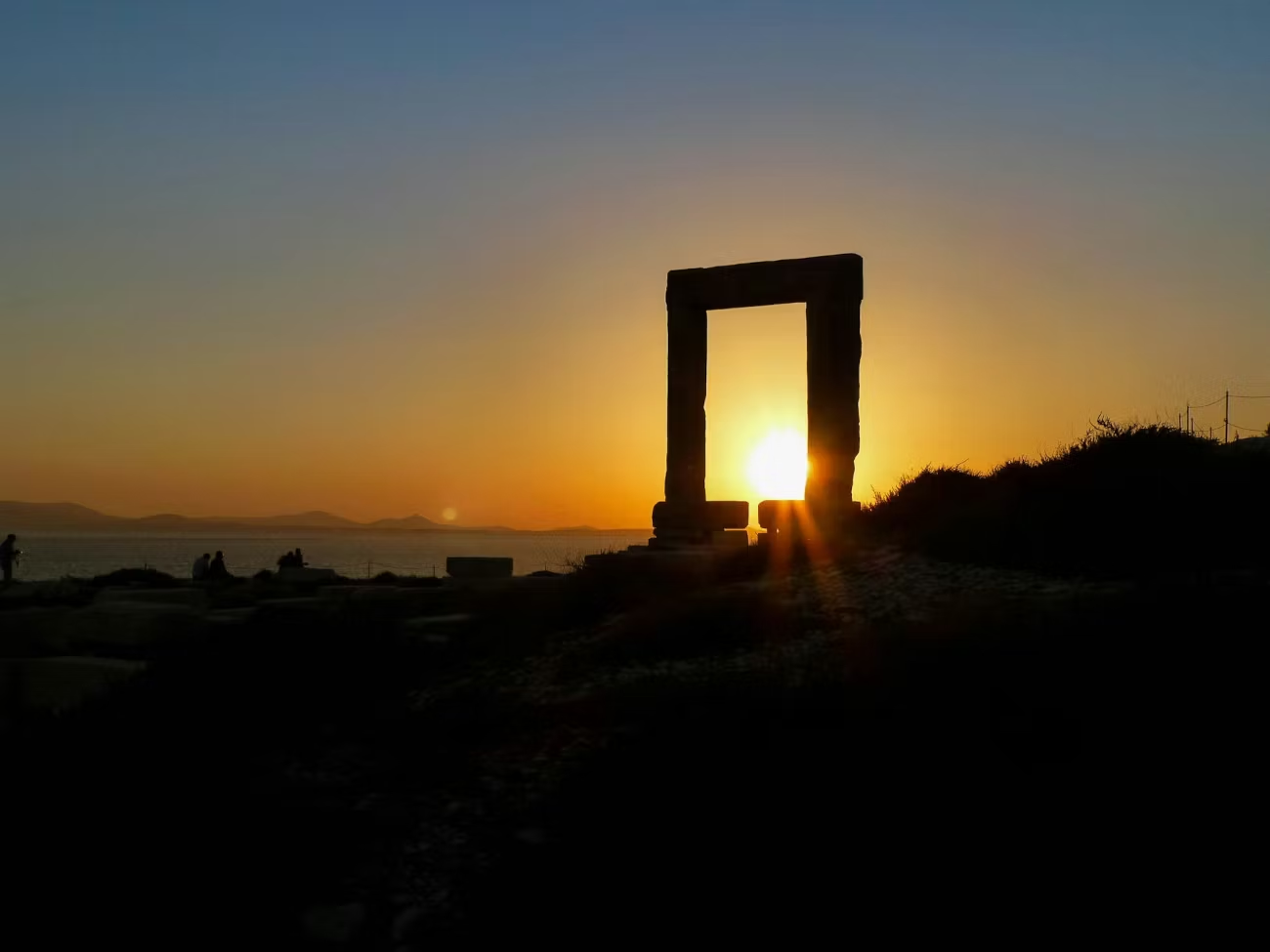
4 Historical Sites To Visit On A Greece Yacht Charter In The Cyclades
Embark on a Greece yacht charter vacation to uncover the rich history and archaeological wonders scattered throughout the Cyclades island chain.
Greece is renowned as one of the most enchanting destinations in the Mediterranean, offering a diverse array of islands with awe-inspiring ancient monuments waiting to be explored.
The Enigmatic Remnants of Akrotiri
As you cruise towards the southwestern shores of Santorini, a journey back in time awaits amidst the ruins of the ancient Minoan town of Akrotiri. Dating back over six millennia, this once-thriving settlement offers a rare glimpse into the sophisticated civilization that flourished in the Aegean during the Bronze Age.
The allure of Akrotiri lies not just in its age, but also in its remarkable preservation, a testament to the cataclysmic events that unfolded around 1500 BC. When the volcano that Santorini rests upon erupted with unprecedented fury, it spewed forth a deluge of ash that blanketed the town, freezing it in time. The same volcanic forces that wrought destruction also bestowed a gift upon posterity, preserving Akrotiri's architecture, artwork, and daily life in astonishing detail.
Wandering through the labyrinthine streets of Akrotiri, one cannot help but marvel at the ingenuity of its inhabitants. Two-story houses with intricately designed facades stand testament to a society that prized beauty and functionality in equal measure. Paved streets, a rarity in ancient times, speak to the town's urban planning prowess, while an advanced drainage system hints at a level of engineering sophistication that was ahead of its time.
Perhaps the most captivating treasures of Akrotiri lie hidden within its frescoes adorned with vibrant pigments that depict scenes of everyday life: bustling marketplaces, lively gatherings, and rituals performed in honor of the gods. Each brushstroke serves as a window into the past, offering tantalizing glimpses of a society that reveled in art, culture, and communal celebration.
The echoes of Akrotiri's past reverberate far beyond the shores of Santorini, sparking scholarly debate and fueling the imagination of generations. Some have speculated that this ancient town may have been the inspiration behind Plato's fabled lost city of Atlantis, a theory bolstered by the town's advanced infrastructure and strategic location at the crossroads of ancient trade routes.
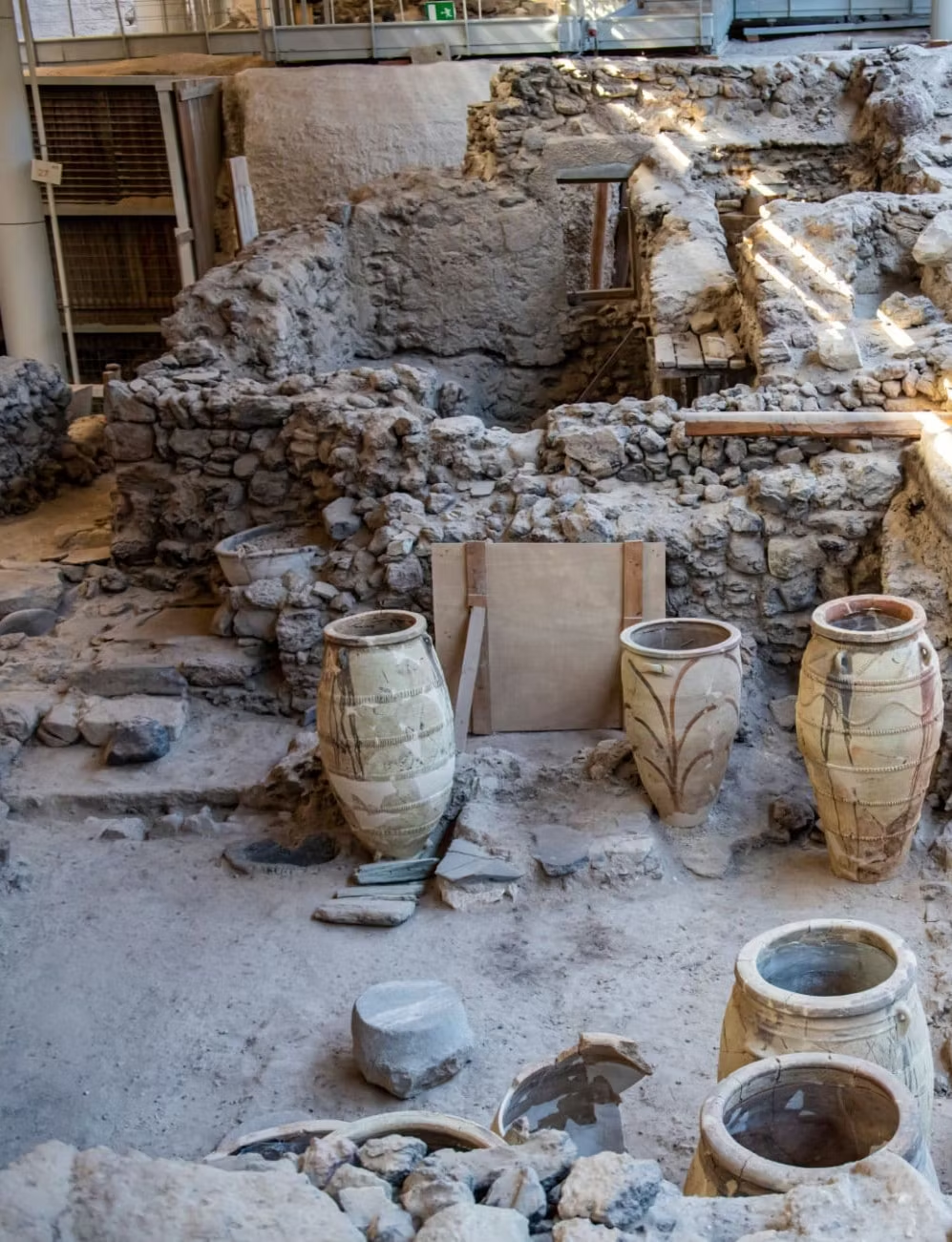
The Majestic Roman Theatre of Milos
Amidst the azure waters of the Aegean Sea, lies a cultural gem that speaks volumes about the island's rich heritage—the Roman Theatre of Milos. While Milos is renowned as the birthplace of the iconic Venus di Milo sculpture, it also boasts a lesser-known yet equally captivating treasure: a Roman-style amphitheater that stands as a testament to the island's storied past.
Constructed in the 3rd century BC, during the Hellenistic period, the original amphitheater served as a gathering place for the island's inhabitants, who would come together to celebrate festivals and revel in the performing arts. It was a place where laughter echoed, music soared, and the dramas of ancient Greece unfolded beneath the open sky.
It was during the Roman era that the amphitheater truly flourished, undergoing extensive renovations and enhancements that transformed it into the grand structure we see today. Utilizing the finest Parian marble, skilled artisans meticulously crafted the seating tiers, stage, and architectural embellishments, elevating the amphitheater to new heights of splendor and sophistication.
With a seating capacity of up to 7,000 spectators, the Roman Theatre of Milos became a focal point for entertainment and cultural expression, attracting performers from across the Mediterranean region. From stirring theatrical productions to rousing musical performances, the amphitheater played host to a diverse array of events that captivated audiences and celebrated the arts in all their forms.
In recent years, efforts to preserve and revitalize this ancient marvel have borne fruit, culminating in a meticulous restoration project that has breathed new life into the Roman Theatre of Milos. Today, visitors have the opportunity to step back in time and experience the magic of the amphitheater firsthand, as it once again becomes a vibrant hub of cultural activity.
During the summer months, the amphitheater comes alive with the sound of music and the spectacle of live performances, as concerts, plays, and cultural events take center stage against the backdrop of the shimmering sea. It is a scene straight out of antiquity, where the echoes of the past mingle with the excitement of the present, creating an atmosphere that is both timeless and unforgettable.
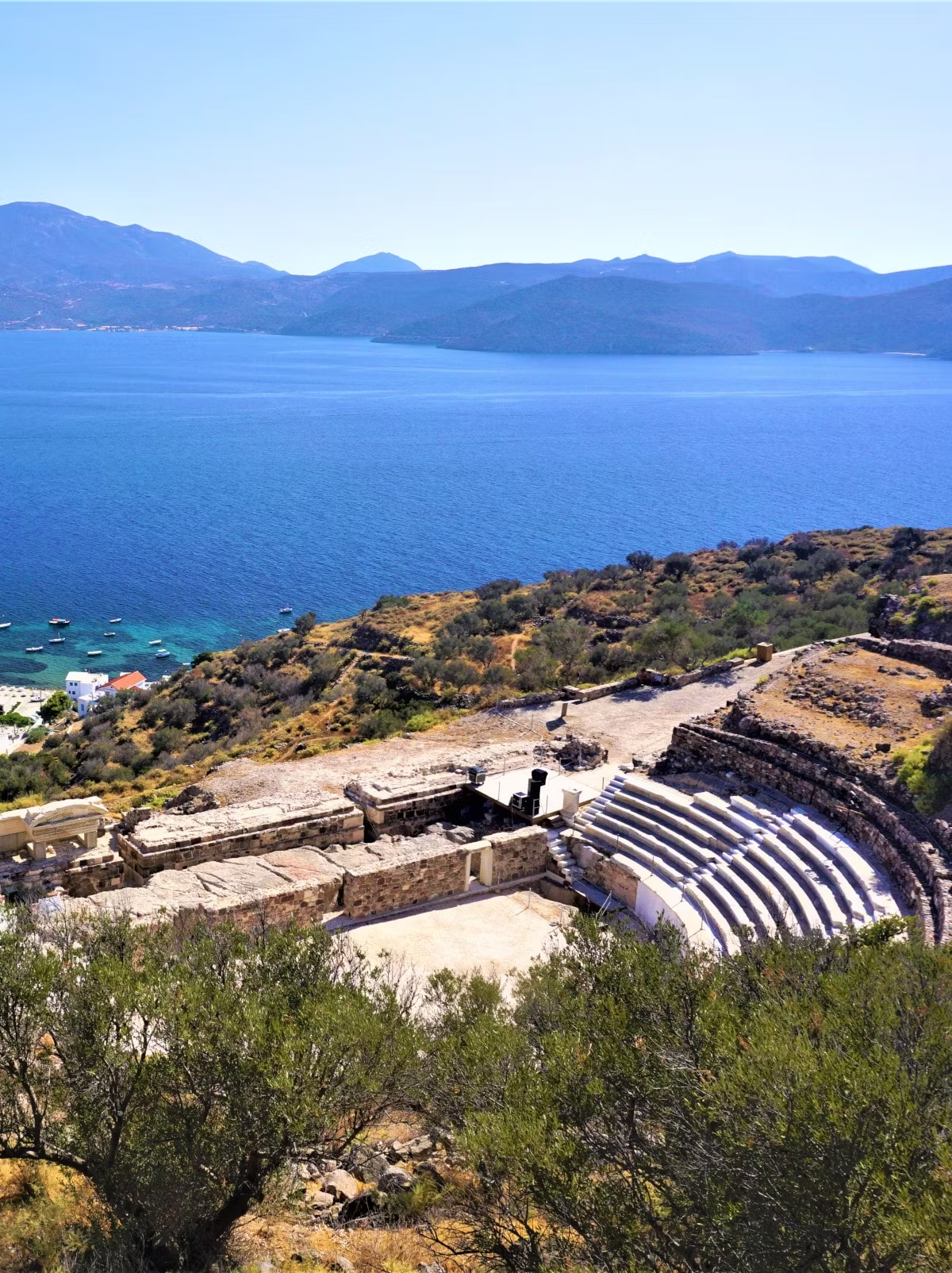
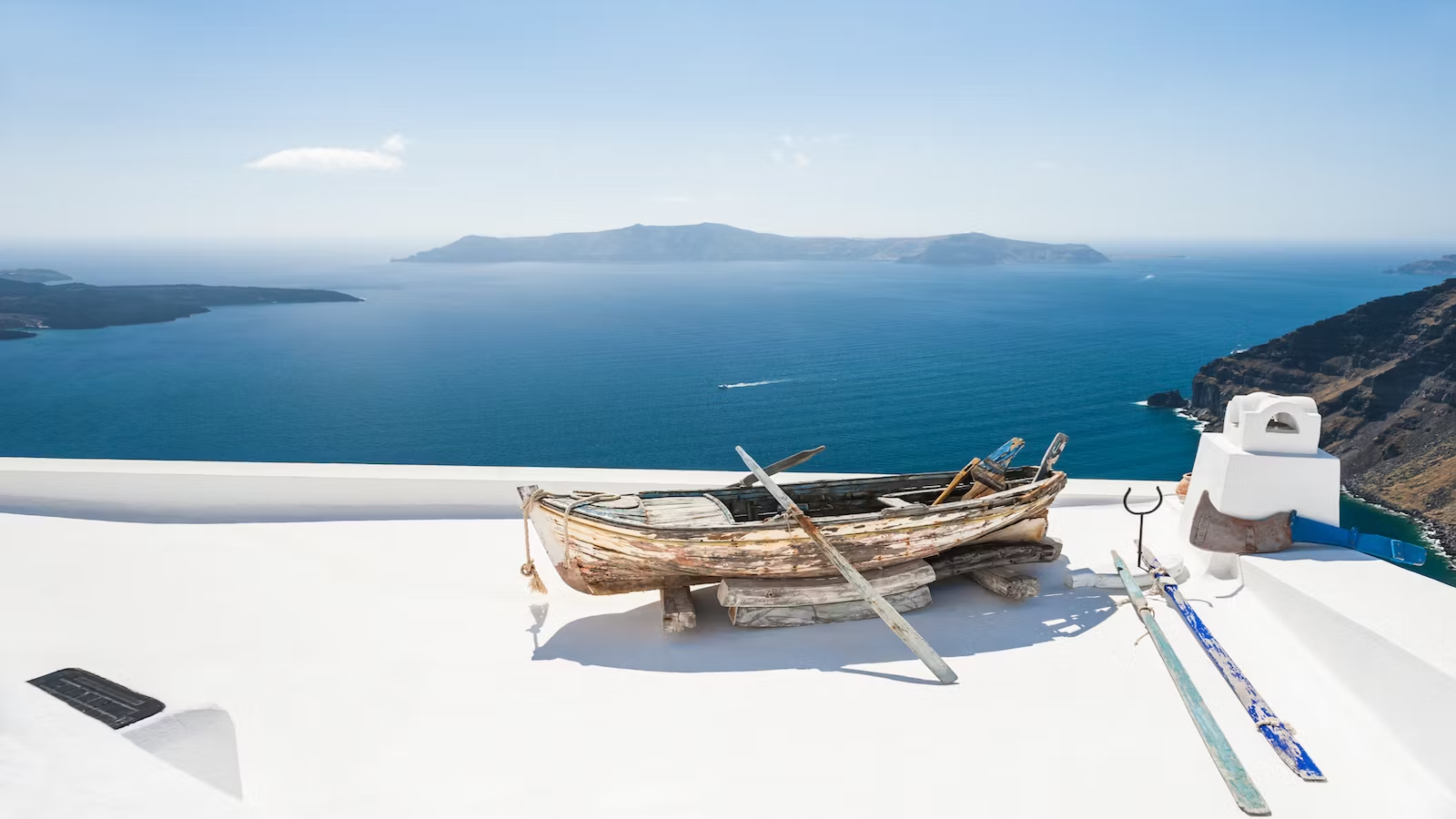
Santorini is renowned for its breathtaking sunsets and spectacular views, making it an absolute must-visit destination for those on a yacht charter.

Greece is a land of myth and legend, treasured for its myriad islands and pockets of serenity. The scenery is comprised of white-washed dwellings, churches with brilliant turquoise shingles, and rolling verdant hills.

Let us create your bespoke yacht charter experience. IYC has access to all yachts for charter globally, including superyachts, megayachts and luxury sailing yachts.
The Timeless Beauty of The Portara on Naxos
As your yacht approaches the shores of Naxos, the imposing silhouette of the Portara, a monumental stone gateway that stands as a silent sentinel overlooking the harbor, is a site not to be missed. Perched atop a hill on the islet of Palatia, this ancient marvel is more than just a remnant of the past—it is a symbol of Naxos's rich history.
Dating back to 530 BC, the Portara is the sole vestige of a grand temple dedicated to the god Apollo, commissioned by the tyrant Lygdamis but left unfinished for reasons lost to time. Despite its incomplete state, its massive stone blocks stand as a testament to the skill and ingenuity of the ancient craftsmen who labored to create it.
Legend intertwines with history on the islet of Palatia, as local lore tells of Theseus, the legendary hero of Athens, who is said to have abandoned Ariadne, the daughter of King Minos, on these shores after his fateful encounter with the Minotaur. Whether fact or fiction, the mythic resonance of this tale adds an air of mystique to the already enchanting landscape, inviting visitors to delve deeper into the rich tapestry of Naxos's past.

Delos: Unveiling the Mysteries of Ancient Greece
A hidden gem awaits just off the western coast of Mykonos: the timeless island of Delos. Steeped in mythology and revered as the birthplace of Apollo and Artemis, Delos stands as a testament to the enduring legacy of ancient Greece.
Designated as a UNESCO World Heritage Site, the landscape of Delos is a veritable treasure trove of archaeological wonders, where the ruins of ancient temples, public structures, and sculptures lie scattered amidst the rugged terrain. Among the most iconic sights is the Terrace of the Lions, a majestic row of seven marble statues that stand sentinel along the Sacred Way, their weathered visages a silent testament to the island's former glory.
The wonders of Delos extend far beyond its famed lions, inviting visitors to delve deeper into its storied past. The House of Dionysos beckons with its exquisite floor mosaics, each tile a testament to the skill and artistry of its ancient craftsmen. Nearby, the imposing Temple of the Delians rises from the earth, its crumbling columns a poignant reminder of the island's former grandeur.
For those with a penchant for history, a visit to the Synagogue is a must. Believed to be one of the oldest in the world, dating back to the 2nd century BC, this ancient place of worship offers a glimpse into the religious practices of Delos's diverse inhabitants.
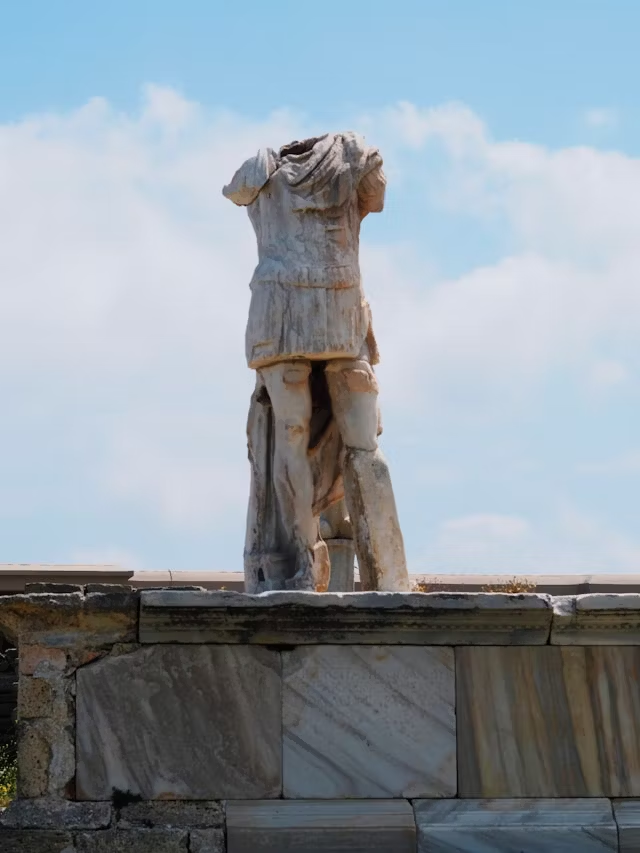
By chartering a yacht, you have the flexibility to explore at your own pace and access hidden gems that are only accessible by boat. Whether you are a history enthusiast or simply enjoy breathtaking views and luxury travel, a yacht charter in Greece is an extraordinary way to experience the country's rich history and natural beauty.
Ancient Theater of Milos | Photo by: Joyofmuseums, Theatre at Milos by Joy of Museums, CC BY-SA 4.0, Photos by Jordi Vich Navarro on Unsplash , Chloé Chavanon on Unsplash.